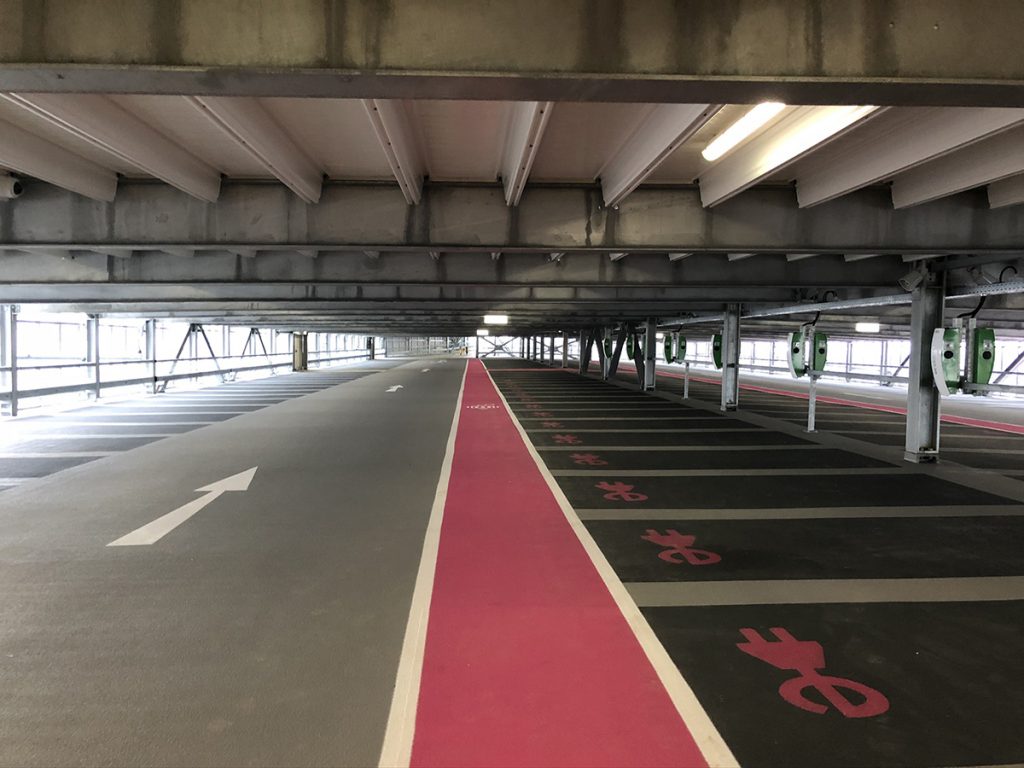01.31.2023 Finding innovative ways to recharge the nation’s electric cars
January 31, 2023
There are now over 650,000 electric cars registered in the UK and for those who do not yet own one, many will have at least considered buying one.
But one of the major barriers to buying an electric vehicle (EV) – beyond the price – has always been the limited number of charge points. So why not simply install more charge points? Seems sensible enough, but it is not as easy as you might think. Space is always an issue when trying to accommodate charge points in parking spaces and so is making sure the power supply can meet the ever-increasing energy demand.

As a practice, we have worked on a vast array of car park projects – from refurbishing unsightly 1960s multi-storey car parks to building brand new, state of the art ones – and
we are constantly looking for new and innovative ways to overcome these issues.
Space is always at a premium
When designing car parks where EV charge posts need to be installed (regulations now stipulate when this is necessary), we need to factor in access for installing and maintaining the charge point itself, as well as the access room needed to recharge each vehicle.
As you would expect, there are clear building regulation rules about space either to the side or to the front of the parking bay to accommodate the charging fitting (300-500mm if you’re interested). For existing surface car park layouts, this means the parking bays will need to be reset, which can have serious implications for the number of spaces. Room on the pavement may also be compromised.
We have come up against this exact issue on two recent projects, Bath Podium and One Glass Wharf in Bristol. To overcome this, we provided parking bays angled to 45 degrees versus 90 degrees to fit more spaces in and consolidated bike parking, squeezing it in to areas where head room is limited. This allowed us to accommodate the charging area needed, while still maximising the number of spaces.
The ever present power struggle
Once you have worked out the space side of things, the issue of actually powering the charge points has to be taken into consideration. While there may be enough energy capacity for the current number of vehicles using the charge points, will there be enough for forecast demand as the number of EVs rises? One solution is onsite solar generation and back up storage (which could also act as revenue earning through flexibility services), but do the numbers add up?
The average car parking space is about 4.8m by 2.4m, or 11.52m². Assuming an output of 120 Watts per m2 that works out at roughly 1.4 kilowatts of power per bay. Looking at the Toyota manufacturing plant in Derby, which has 2500 parking spaces, this would mean it needs 3.45 megawatts, that’s almost 11,000 photovoltaic (PV) panels. And the UK has between three and four million spaces – that’s a lot of PV panels.
What’s more, roofing over large surface car parks with solar canopies requires structural support, integrated lighting and cabling, which will encroach on how much room there is for parking spaces. So what’s the alternative? It could make sense to install canopies to all pedestrian routes around these large car parks instead – airports, park and rides or manufacturing plants such as Toyota in Derby. This would be a far less complicated and faster way of introducing PVs at a cost more affordable to the landowners.
EV charging is not something that is going to go away any time soon, which makes this is a very interesting time for car park design. It has encouraged us to rethink our approach to design and forces us to find new, creative solutions – and isn’t that what great architecture is all about?